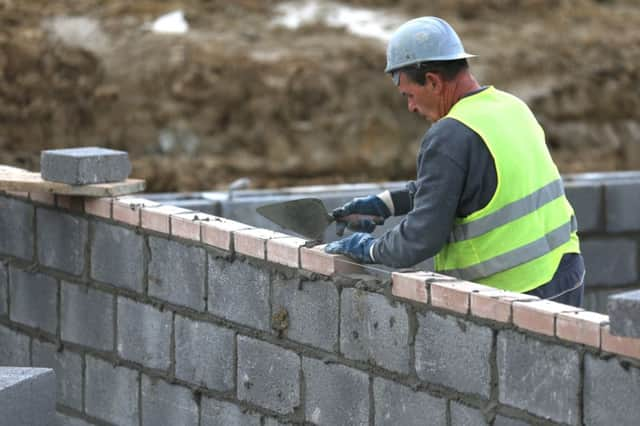Comment: Local authorities key to housing bubble


After the long recession, the boom came quickly, and that’s one of the difficulties with trying to deal with it. There are calls for, and now expectations of, an interest rate rise by the end of the year and possibly more to follow.
This, however, is a blunt instrument that has unintended consquences. Interest rate rises impact on currency, on company investment decisions and inflation. It is not necessarily the most appropriate tool in the box. A better solution is to release more land for development, speed up the planning process and encourage local authorities to add more to the stock of public housing,
Advertisement
Hide AdAdvertisement
Hide AdThe shortfall in the number of homes being built annually is somewhere between 170,000 to 240,000, according to Brewin Dolphin equity analyst Stephen Williams, who says the housebuilders are taking a large amount of the flak for the housing crisis. Williams argues that funding housebuilding through public-private partnerships would be less capital intensive than the private housing model and should be less sensitive to the housing cycle.
The housing debate rarely ventures into these territories. While housebuilders are asked to build more properties on non-existent land, the Bank of England is expected to raise interest rates to cool prices. It is a redundant argument that requires new thinking.
Well runs dry, but Faroe has a pot of black gold
the consortium of oil companies behind the giant Butch Main field in the Norwegian North Sea failed to find oil in the fringes of the discovery, a case of some you win, some you lose. However, there are always other opportunities to get the desired result. The South-West well will now be plugged and abandoned, following a similar process at the east well.
The four stakeholders – Centrica, Faroe, Tullow Oil and Suncor – will focus on extracting the oil from Butch Main and await the outcome of drilling tests from two other fields, one in a few days time.
There had been early estimates that the South-West well would have added significantly to the expected yield from Butch which is regarded as a major find. Discovering that the South-West is dry has been described as a disappointment, though it was always pencilled in as a potential “bonus”, rather than a key driver or gamechanger.
Attention, however, is switching to the neighbouring Pil and Bue prospects. Faroe believes the two Pil appraisal wells could be the most exciting it has ever drilled, prompting analysts to take a closer look at the numbers they are likely to produce. The company has a bigger stake in this discovery than in the Butch field, so the rewards are potentially greater.
As taxation is never far from the debate over oil industry calculations it’s worth noting Faroe’s focus on the Norwegian North Sea. Norway operates a tax efficient system which incentivises exploration, through reimbursement of 78 per cent of costs in the subsequent year.
No wonder it has built an extensive portfolio of high potential exploration licences in Norway. Something for the UK Chancellor to think about, perhaps.